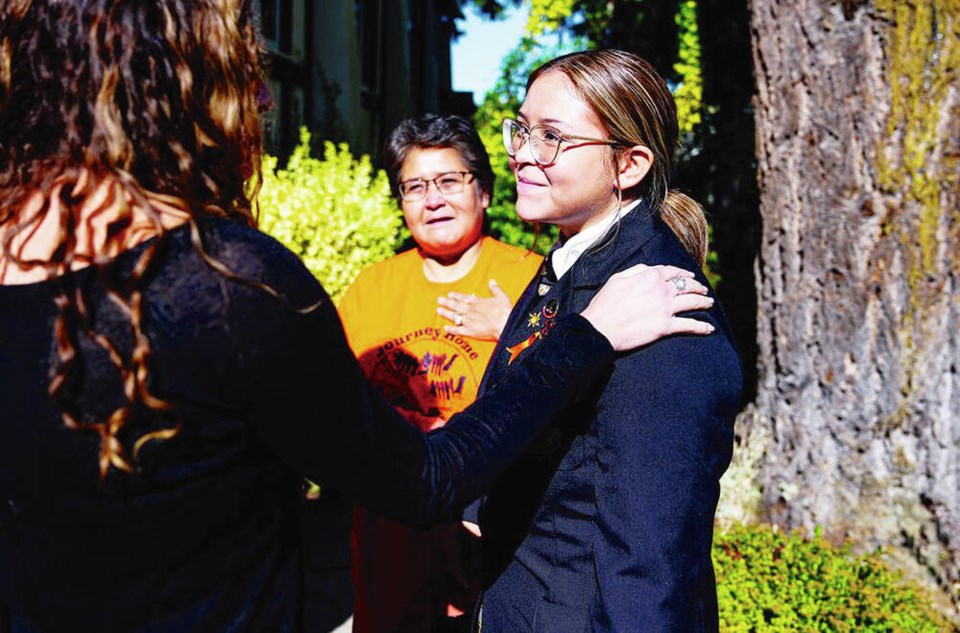Tla-o-qui-aht’s Hannah Frank takes on the role of Mary Robins in Scenes from the Nanaimo Indian Hospital, a play that marks a “confluence” of Nuu-chah-nulth, Hul’q’umin’um’ and Kwak’wala languages as the audience follows a friendship between three girls in attendance at the hospital.
“To represent Nuu-chah-nulth is to show that we’re still here,” said Frank, a Grade 11 student at Shawnigan Lake School. “The schools or the hospitals didn’t take us away.”
According to the University of British Columbia’s Indian Residential School History and Dialogue centre, the Nanaimo Indian Hospital, open from 1946 to 1966, was among three larger-scale institutions that racially segregated First Nations people throughout the province. To stop the spread of tuberculosis, the “Indian hospitals” functioned to isolate patients, including students who contracted the illness while in attendance at residential schools, from the broader public.
Mary Robins, the Nuu-chah-nulth character in the play, speaks the Barkley dialect, while Frank, whose traditional territory is in the Tofino area, speaks a central dialect of Nuu-chah-nulth. Frank said roughly 40 per cent of her lines are in Nuu-chah-nulth.
Although Frank does not speak fluently, she strives to one day hold conversations with other fluent speakers.
She said she took on the play as an opportunity for her to learn more of her Nuu-chah-nulth language.
“The culture still lives inside us, the language still lives inside us. It isn’t gone,” Frank said.
“The language, it’s just sleeping,” she added. “You just have to wake it up.”
Frank’s aunt, Ida Thompson, suggested she become involved with the play. She was hesitant at first because she had not acted before.
“The reason why I chose and agreed to do the play was because my late grandpa, Art Thompson, he was in the Nanaimo Indian Hospital,” she said. “It was a chance for me to help raise awareness about this, and reconcile as well.”
Dr. Laura Cranmer of ‘Nagmis and Haida First Nations wrote the play. She is a residential school survivor and was at the Nanaimo Indian Hospital for three years.
“Hearing other stories about people going in for the dentist and coming back with no teeth … I thought that was horrible,” Frank said. “I couldn’t imagine what they’ve been through.”
The play has travelled across Vancouver Island, with two performances on March 28, at the Malaspina Theatre at Vancouver Island University in Nanaimo — across the street from the former Nanaimo Indian Hospital.
Tickets are available for the 6:30 p.m. show, which is free, and can be reserved online at tinyurl.com/4xmmvtvt.
“My hope is that I can show that I’m Tla-o-qui-aht, and that I’m very proud to be a Tla-o-qui-aht,” Frank said. “I hope that I make my people back at home really proud of what I’m doing.”
Alexandra Mehl is a Local Journalism Initiative reporter with Ha-Shilth-Sa. The Local Journalism Initiative is funded by the Government of Canada.



